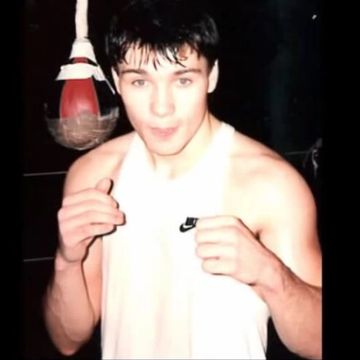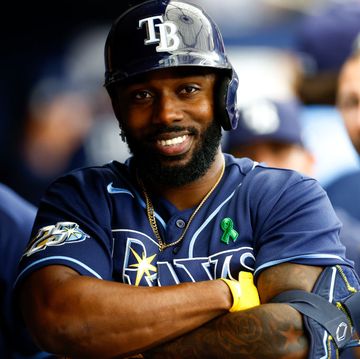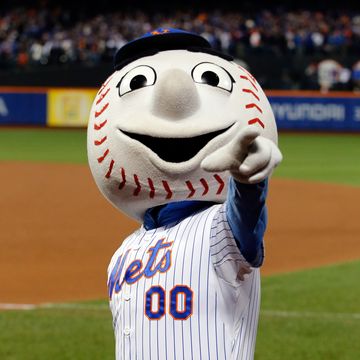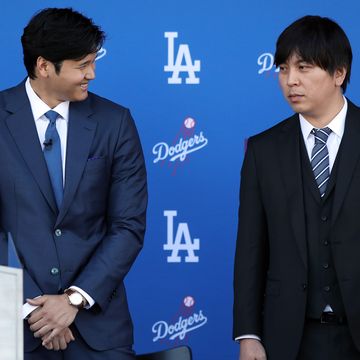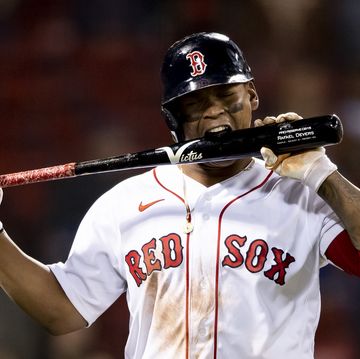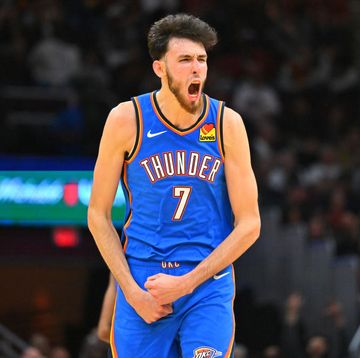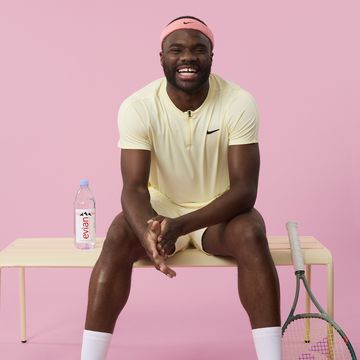There’s a wonderful Jack Nicklaus moment that I think about all the time. It happened in 1980, during the U.S. Open at Baltusrol. Nicklaus was 40 years old and already a legend, already widely regarded as the best golfer of all time. Over the previous year, he had at least vaguely considered quitting, because his swing had broken down and he wasn’t sure that he wanted to go through all the effort necessary to fix it.
But fix it he did. He remade his game. And now he stood on the 17th green, and he was leading the tournament, and he faced a 22-foot putt that would seal the deal and give him his first U.S. Open victory in eight years.
And as he stood over the putt, the most wonderful meta thought crossed his mind.
“Hey,” he thought, “this is exactly the kind of putt I make in moments like these.”
Imagine what that feeling must be like—a lifetime of winning condensed into a feeling. Hey. I’m Jack Nicklaus. I make these putts! Of course, Jack made the putt. And that was major championship No. 16 and his last U.S. Open title.
I’d like to think a similar thought crossed Novak Djokovic’s mind on Sunday in his French Open final against Casper Ruud. Djokovic started the match sluggishly. He made a few unforced errors—“uncharacteristic unforced errors,” they’re called in Novak’s case—and he was broken the first time he served. After five games, he was down 4-1.
But he broke back when Ruud botched an overhead and the set went into a tiebreaker. And once it got there, I feel sure that Djokovic had his Nicklaus moment, that a thought bubble popped over his head:
“Hey, this is a tiebreaker. And I’m Novak Djokovic. This is my moment. I win tiebreakers.”
Before we go on, let me give you the statistic … and the more you know about tennis, the more absurd this statistic will look: Novak Djokovic played in six tiebreakers during this year’s French Open. It goes without saying that he won all six. But here’s the thing: He made exactly zero unforced errors in those tiebreaks. None. Nada. Fifty-eight tiebreak points at the French Open, on the slowest surface on earth, and he had 19 winners and no unforced errors.
It’s impossible.
He’s impossible.
Yes, in the aftermath of Djokovic beating Ruud and winning his 23rd Grand Slam singles title—most for any man in tennis history—it is tempting to call Djoker the greatest player ever. Plenty of people are doing that today, and it is a perfectly defensible numerical argument. But I’ve long thought that oversimplifies his journey and oversimplifies what led him to such heights, what made him a most perfect pressure player.
Without Roger Federer, there is no Novak Djokovic.
Without Rafael Nadal, there is no Novak Djokovic.
Novak began to come into his own in 2007—he was 20 years old then, and Roger was king. Fed won three of the four grand slams that year, just like he had the year before and just like he had in 2004. By the end of 2007, Fed had 12 grand slam championships, more than Bjorn Borg, as many as Roy Emerson, just two behind the all-time leader, Pete Sampras.
But, of course, it was more than just the number of titles. Federer played such an achingly beautiful game—a gorgeous blend of finesse and power and elegance—that, as with Gale Sayers and Ken Griffey Jr. and Julius Erving and Lionel Messi, you didn’t need to know anything about the sport to understand that he was different. In the 2007 U.S. Open final, he outclassed the young Djokovic in three straight sets. The first two of those sets were tiebreakers, and Federer won them both easily.
Djokovic had seven set points in those first two sets.
“My next book is going to be called, Seven Set Points,” the young Djoker said, and everybody laughed, but the truth was he didn’t know HOW to beat Federer.
“He knows what it feels like to be in that kind of situation,” Djokovic said of him blowing a 40-0 lead when serving for the first set. “For me, this is something new.”
Joe Posnanski has been called "contemporary sports writing's biggest star." For more stories from Joe, subscribe to his Joe Blogs Substack newsletter at joeposnanski.com, where he writes about sports, pop culture, life, and all manner of nonsense.
Well, Djokovic was hardly alone in his inability to pierce Fed’s invincibility. In 2007, there was only one player who knew how to beat Federer. That was Rafael Nadal. Rafa was not even a year older than Djokovic, but he ascended more quickly. He won his first French Open title on the day he turned 19, beating Fed in the semifinal. It was Nadal who took out Djokovic at the French Open and Wimbledon in 2007—Djokovic actually retired in the Wimbledon match, drawing some criticism.
And if Federer was a dancer—Fred Astaire in tennis shoes—then Nadal was a bruiser, hitting screaming topspin shots and wearing cutoff sleeves so opponents could see his muscles. He was, in the most powerful of ways, a cliché—a tennis warrior who played every point as if it were his last. There was no shot he wouldn’t try to chase down. To beat him, you had to hit three or four or five winners just to take one point. You know that scene in “Fatal Attraction” where a seemingly dead Glenn Close pops out of the bathtub? That was what it was like to play Nadal.
Tennis belonged to them. Federer and Nadal were evolutionary players who took little pieces of the great players from years gone by. Federer was a little bit of Rod Laver, a little bit John McEnroe, a little bit of Pete Sampras. Nadal was a little bit of Bjorn Borg, a little bit of Jimmy Connors, a little bit of Andre Agassi. They lifted the whole sport to another place.
And there was no place at the top for anybody but them.
Along comes Djokovic. In those early days, he would do very funny on-court impressions of other players. He would say funny things in press conferences. When he played Federer in that 2007 U.S. Open final, Maria Sharapova (“just a friend”) and Robert De Niro were in his box. He seemed content to be a character actor in the tennis world, a comedic sidelight. Even after he won the 2008 Australian Open—beating Federer along the way—and moved up to No. 3 in the world, he was still pretty widely viewed as a foil for the big two, the Robin to their Batman, the Donkey to their Shrek, the Chewbacca to their Han Solo, the Pedro to their Napoleon Dynamite.
So 2011 came as a massive surprise to pretty much everybody. By then, Federer had the record of 16 grand slam titles, Nadal had nine majors himself, and had become only the third player in the Open Era to capture the career grand slam; their rivalry was everything in the sport.
Djokovic beat Federer in straight sets on the way to an Australian Open title.
Djokovic beat Nadal in four fairly easy sets to win Wimbledon.
Djokovic beat Federer and Nadal in back-to-back matches to win the U.S. Open.
How did he do it? Well, that was the thing: It wasn’t easy to explain. Djokovic had remade his body with a whole new diet and workout routine, but that didn’t really explain it. Djokovic had added all sorts of new pieces to his game—a better serve, a more powerful forehand, etc.—but that didn’t really explain it, either. Djokovic’s tennis genius was not as obvious or striking as Fed’s or Rafa’s. There was no one adjective to describe it … or him, for that matter.
People tried to reduce Djokovic to one note. Some called him a human wall, for example, as if his success came down his simple willingness to outlast opponents. Others pointed only to his breathtaking ability to return serve. Others still condensed his game to defense and his ability to track down any ball on the court and make his opponents continuously hit one more shot than they were willing to hit.
And, yes, all of that was PART of Djokovic’s brilliance, but each was only part. It was hard for so long to see the whole of Novak Djokovic because he was never one marvelous thing, never dazzling grace like Fed or a gladiator like Rafa. He was a shapeshifter who became whatever the situation demanded.
Djokovic invented a new way to play tennis, a way only he understood.
He did it so that he could beat Roger Federer and Rafael Nadal.
“Those two guys,” he says, “were occupying my mind for the past 15 years, quite a lot. … Countless hours thinking and analyzing what it takes to win against them.”
Countless hours. From the French Open in 2014 through the French Open in 2016, Djokovic reached the final of eight out of nine grand slams, winning six of them, three against Federer. In 2021, he made it to the final of the U.S. Open, with a chance to win the yearly Grand Slam, before tiring out and getting swept away by Daniil Medvedev. He has won each of the grand slams at least three times, the only player to do that. It’s mind-boggling stuff.
And it all began in pursuit of Roger Federer and Rafael Nadal.
On Sunday, he faced a fine player with a lightning forehand in Casper Ruud. Djokovic was a heavy favorite—he had played Ruud four times before and had never lost a set. (Ruud, alas, has never taken a set off of any top three player). For so many, Djokovic had already won the French Open in Friday’s semifinal when he and the prodigy Carlos Alcaraz played two heavenly sets until Carlitos succumbed to the heat and his own nerves and the body cramps crippled him.
But that’s not how sports works. The 1980 U.S. hockey team still had to beat Finland to take gold. The 2004 Red Sox still had to beat the Cardinals to break the curse. Ruud took that 4-1 first-set lead and was taking it to Djokovic.
And then Djokovic leaned on all of those superpowers that he has harnessed through the years. He’s the most complete player who ever lived, of that I feel sure. There is no weakness in his game*: he can beat you with his forehand, he can beat you with his backhand, he can beat you with his serve, he can beat you with his return of serve, he can beat you playing offense (his net play is so underrated), and he can beat you playing defense, he anticipates your next shot better than anyone, and he disguises his next shot as well as anybody, and he can find the open court from anywhere and everywhere.
*If Djokovic has one fragility in his game, it seems to be his unease with the overhead. But, as many people have pointed out, you aren’t going to beat Djokovic by feeding him overheads.
And when the decisive moment happens, he takes his game higher. As mentioned, he played six tiebreakers at the French Open and won them all and didn’t commit an error. He played four tiebreakers at the Australian Open and won them all—two in the final against Stefanos Tsitsipas.
At last year’s Wimbledon, he played one tiebreaker—it was in the final against Nick Kyrgios. He won that easily to take the match.
So, yes, when it came time to play that tiebreaker against Ruud on Sunday, he must have had the Nicklaus moment when he knew what would happen before it happened, because, yes, he’s Novak Djokovic. He won the first point with a spectacular running forehand. He won the second by chasing down a drop shot and punching a volley into the open court. Ruud badly missed a forehand. After hitting a forehand winner, Ruud made back-to-back errors to fall behind 5-1.
Djokovic hit an ace to make it 6-1.
Djokovic hit a forehand winner into the open court to take it, 7-1.
And the rest was inevitable. Ruud knew. Djokovic knew that Ruud knew. The crowd knew. And Djokovic breezed to his 23rd grand slam title in straight sets. Moments after the match ended, he said he was already thinking about Wimbledon, where he is an odds-on favorite.
With Federer retired and Nadal injured and talking hopefully but uncertainly about playing one final year in 2024, there seems less and less doubt that Djokovic will end up with the grand slam record, and it will be many, many years before it will be challenged. But just as it was a mistake to reduce Djokovic’s game to a single note, it is a mistake to reduce Djokovic’s career to a number or a title.
Think of it this way: He grew up in a war-torn country, listening to the bombs being dropped from overhead, and he dreamed of becoming the No. 1 tennis player in the world. He has spent more time at No. 1 than any player, man or woman, in the history of the sport. Today, at age 36, he is No. 1 again. Novak Djokovic is a lot of things, and people have many opinions about him. But, perhaps most of all, he is the story of the power of dreams.

Joe Posnanski has been named the best sportswriter in America by five different organizations, including the Sports Media Hall of Fame and the Associated Press Sports Editors. He has also won two Sports Emmy Awards. He is the No. 1 New York Times bestselling author of six books, and he co-hosts the PosCast with television writer and creator Michael Schur.



